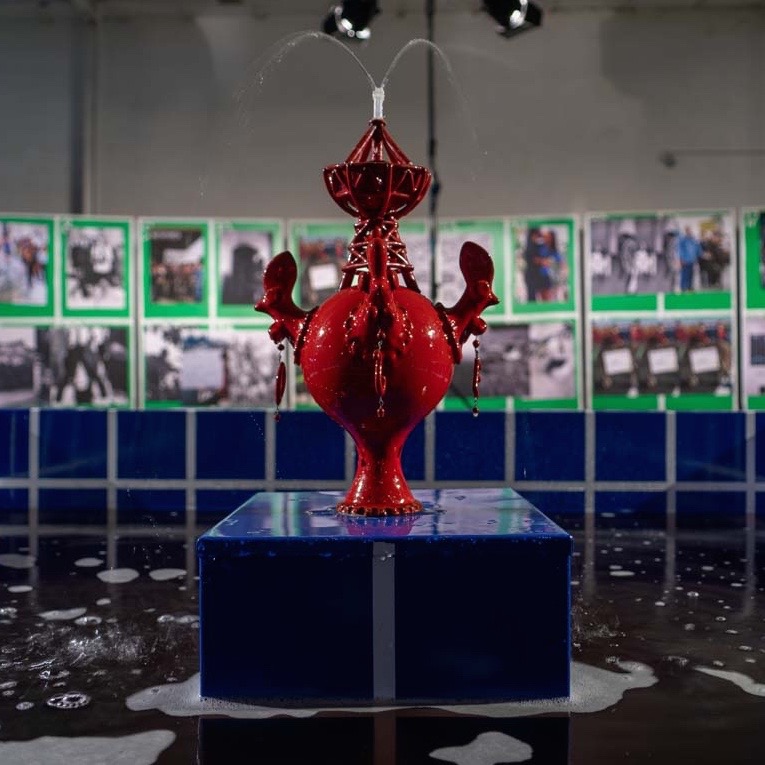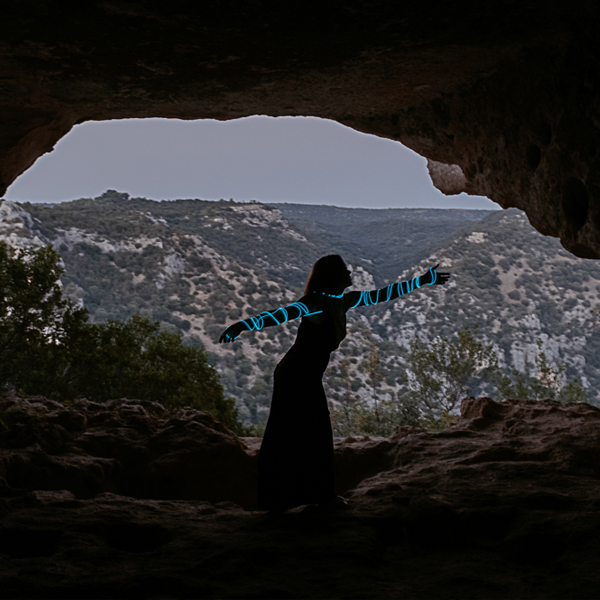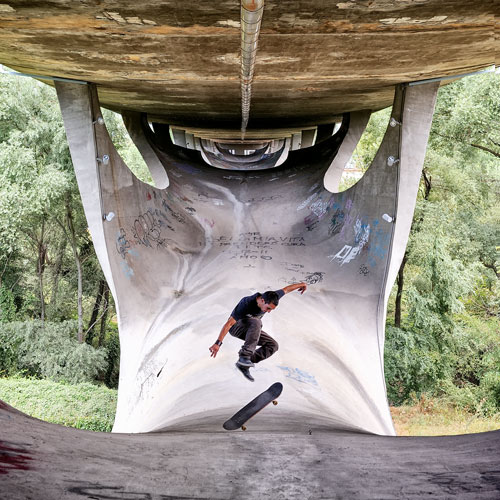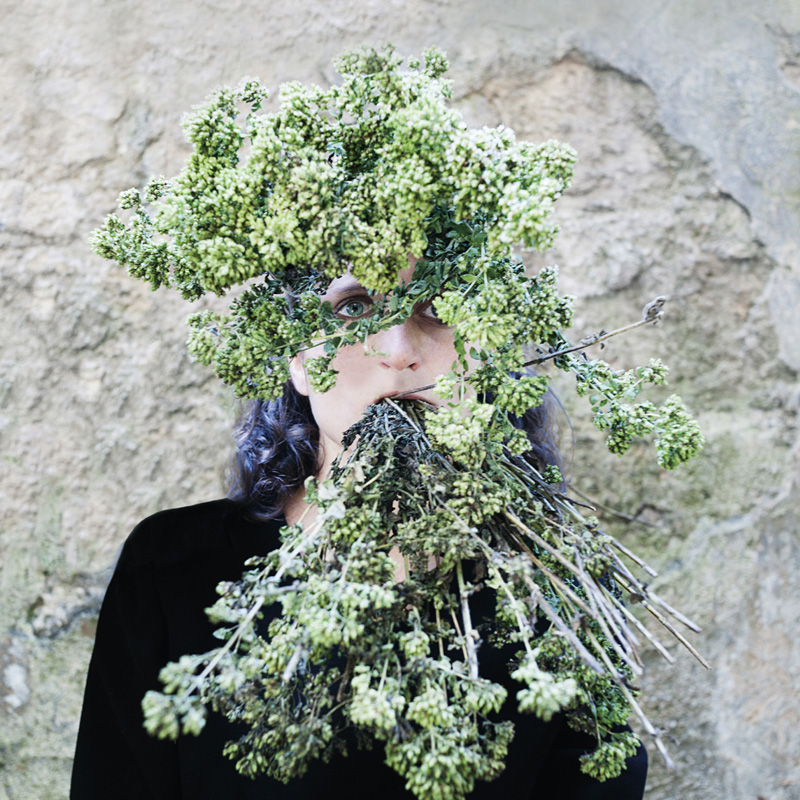Home
The Land of Cockaigne, the fourth exhibition put on by I-DEA

Stories, legends and fantastic characters returned to life in the fourth exhibition put on by I-DEA,
"The Land of Cockaigne", curated by Navine G. Khan-Dossos and James Bridle. The exhibition
was an artistic project based on Basilicata's extremely rich archival heritage, and told the story of
the role of imagination in our lives. It was opened in the hangar at Cava Paradiso on 18 October,
and bore witness to the great vivaciousness of the history that has given life to Matera and Basilicata, and how it still has a major impact on our lives today. From musical instruments built
with wood from its trees, to skins and the green screens from cinema sets, the fourth I-DEA
exhibition put the many symbols of the land and its meanings on display. From the donkey
Nicoletta, the symbol of the anti-nuclear protests in Scanzano, portrayed by Tony Vece in a
number of photographs in the exhibition, to artefacts made by citizens in papier maché workshops
under the coordination of artisan Raffaele Pentasuglia. Navine G. Khan-Dossos and James Bridle
also left a number of precious elements from the previous exhibitions-including Lionetti's
engravings and Luigi di Gianni's films- in the space, which was designed by Elisa Giuliano, Martha
Schwindling and Antonio Elettrico for the Open Design School.
Following “The Land of Cockaigne”, I-DEA will be preparing for another transitional phase from 18
November before putting on its fifth and final exhibition of 2019, "Inhabiting the Archives, Life,
Movement and Collection". This is the final stage of the project, and takes the form of an exhibition
curated by Pelin Tan and Liam Gillick. The project is based on archives selected as part of the
research carried out by the internationally renowned curator and the artist, and represents a critical
approach to modernism, in line with the history of the territory from the 1950s to today.
The “Land of Cockaigne” draws on the ancient, the living and the future. Inspired by the spirit of
Cockaigne, the curators have brought together ancient plants and modern forgeries, pre-war
documentaries and modern successes, bagpipes and satellites and science and rituals with the
aim of demonstrating the many ways in which the wealth of the present gives new life to the past.
The exhibition has been drawn from numerous different archives, from the Accademia Nazionale di
Santa Cecilia, the Archivio di Etnomusicologia, the Agenzia Spaziale Italiana, the Centro di Geodesia Spaziale Giuseppe Colombo, the Archivio Domenico Notarangelo, the Archivio Luchino
Visconti, the Fondazione Gramsci, the Archivio di Stato di Matera, the Alberico Larato private
collection, the Gianfranco Lionetti private collection, the Nicola Scaldaferri private collection, the
Consorzio di Bonifica della Basilicata, e-GEOS, the Fondazione Cineteca di Bologna, NASA, the
Volontari della Parrocchia B.V.M. del Carmelo, Wikimedia Commons and Titanus Film. A fountain
with a cuckoo sculpture designed and created by Francesco Mitarotonda has also been prepared
specifically for the exhibition.
Invisible Pavilions

- Project Leader/Coproduzione/Ecc.:
Co-produced by
SoutHeritage Foundation - Immagine progetto:

- Facebook:
- Twitter:
- Instagram:
- Project Partners:
Human ecosystems, Italy
Museo per la fotografia “Pino Settanni”, Italy
ENSA National Art School of Art, France
Global Grand Central, Sweden
BAICR - cultura della relazione, Italy
Fondazione Filiberto Menna, Italy
Fondazione Sinisgalli, Italy
Associazione Giovani Unesco Basilicata, Italy
- Artists:
Riccardo Arena, Italy
Eric Aupol, France
Bianco Valente, Italy
Tomaso Binga, Italy
Thomas Bontemps, France
Monica Bonvicini, Italy
Giuseppe Fanizza, Italy
Yona Friedman, Hungary
Andrew Friend, Great Britain
Peter Fischli & David Weiss, Switzerland
Ferenc Gróf, Hungary
Kyo-Hyun Kim, South Corea
Gustav Metzger, Germany
Maurizio Mochetti, Italy
Clara Noseda, France
Renzo Piano , Italy
Angelo Vermeulen, Germany - Evento:
- Campo aggiuntivo 5:
Supported by BCC Basilicata
The excavated subterranean architecture and the extensive system of cisterns in the Sassi area represent the visual, spatial and structural element that has established the city of Matera as a World Heritage Site.
AltoFest Matera Basilicata 2019

- Project Leader/Coproduzione/Ecc.:
Co-produced by
TeatrInGestAzione - Artists:
Gesualdi | Trono (artistic direction)
Loretta Mesiti (dramaturg) - Sponsor:
- Evento:
"Abitare Futuro" is the theme inspiring this Altofest special edition. From 4th of November to 8th of December, over 26 international artists with performances in 11 towns of Basilicata Region, in 5 different areas, will be hosted by residents in their houses, which then become venues that welcome audiences.
Take part to the Matera 3019 workshops with La Scuola Open Source

Update 5 December 2019
The list of selected participants has been published.
Update 27 November 2019
The deadline to send your application has been extended to 11.59 pm of 30 November 2019. The list of selected participants will be published on the workshop website by 1 December.
We planned two different workshop activities for Matera 3019, the project that closes and reopens Matera 2019: with Teatro delle Forche, involving girls and boys, we will cross Matera envisioning the possible futures; with La Scuola Open Source and Open Design School we will work on a digital tool capable of enabling conversations to build new tomorrows.
It is an opportunity to reflect, summarize, to have a vision and understand what happened and launch proposals on the cities we crave.
The project XYZ2019 with La Scuola Open Source includes a digital platform (website), a process of community development, networking and animation of the same, for the following purposes:
- collect, measure, systematize and enhance what was done during Matera 2019 (events, reports, contents, ideas, etc.);
- connecting all the people who participated in the activities, promoting self-organization and collaboration;
- build a digital platform that effectively enables independent cultural production.
Participation is free and open to all those interested in taking part in the process, coming from any professional / academic background.
Participants will be selected based on their own motivation and experience (formal or informal). The workshop will be held at the Open Design School; the laboratory activities are concentrated in the days between the 7th and 15th of December.
To join XYZ2019 lab you must fill in the following application form by 11.59 pm of 22 November 2019. The list of selected participants will be published on the workshop website by 22 November.
Applications require a motivational letter and a résumé (a short self-presentation with a list of your experiences). You can also attach a portfolio. To know more about the call and to send your application click here.






